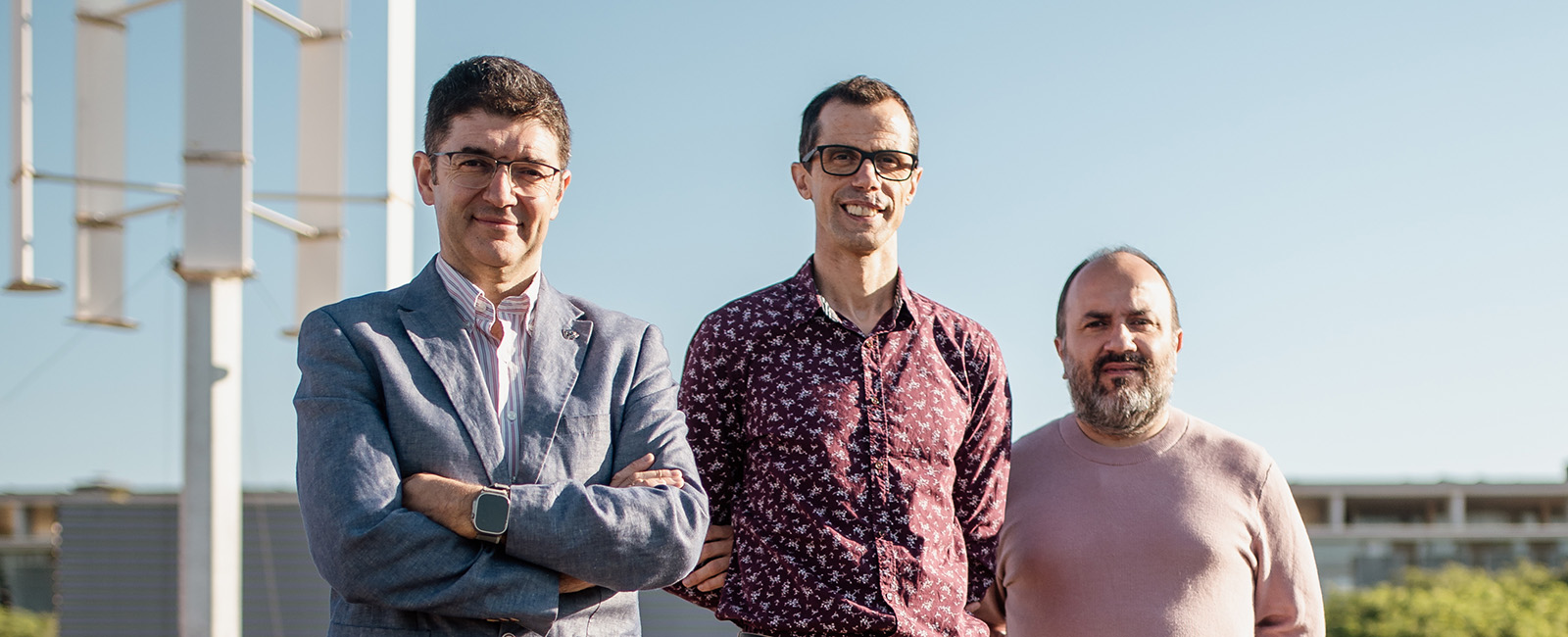RESEARCH TEAM
Principal investigators: Carlos Olalla Martínez (Universitat Rovira i Virgili) and Àngel Cid Pastor (Universitat Rovira i Virgili).
Team members: Francesc Guinjoan Gispert (Universitat Politècnica de Catalunya) and Oswaldo López Santos (Universitat Rovira i Virgili).
DESCRIPTION
A massive power outage plunged Spain into darkness in April 2025; in just a few seconds more than half the country’s generation capacity was lost and the system collapsed. Although the official inquiry has yet to name a definitive cause, experts are agreed on one point: the electricity grid is now significantly more vulnerable because it has failed to adapt to the growing penetration of renewable energies and grid-connected electronic systems.
One month earlier, a group of researchers led by Carlos Olalla and Àngel Cid from the Universitat Rovira i Virgili sought a Fundamentos grant for their ACES-GRID project whose goal is to reinforce the grid with smart inverters capable of preventing a certain type of power failure before it escalates into a blackout.
One of the project’s hypotheses is that there is an underlying problem: that photovoltaic inverters – devices that convert solar energy for delivery onto the grid – have primarily been designed with efficiency maximization in mind. Multiplied by thousands, these conversion stages can interact with each other generating harmonics and resonances: phenomena that may be imperceptible on a small scale, but can propagate and amplify to the point of causing chain reactions. The project will look in detail at these resonances, which can at times trigger instabilities and cause equipment to shield itself by shutting down.
One solution is to equip inverters with “virtual inertia,” rather like having a buffer supply of extra power that can be released in milliseconds to stabilize the system. In hydroelectric plants, the dammed water acts as a natural buffer against abrupt changes. Solar panels do not have this advantage, but the supercondensers that ACES-GRID proposes can mimic it on a reduced scale. “We want to see inverters go from being simple power converters to taking an active stabilizing role,” says Cid. If they succeed, Spain and Europe can move towards a far more renewable future in the confidence that the power grid will be more robust, even in the face of technical storms like the one potentially responsible for last April’s blackout.
The team’s work plan includes advanced simulations that can reproduce instability scenarios similar to those leading to an outage; the design of improved inverter prototypes, tested in the laboratory with controlled disturbances; and collaboration with electricity operators and manufacturers to check models against real data and validate hypotheses in safe environments.

